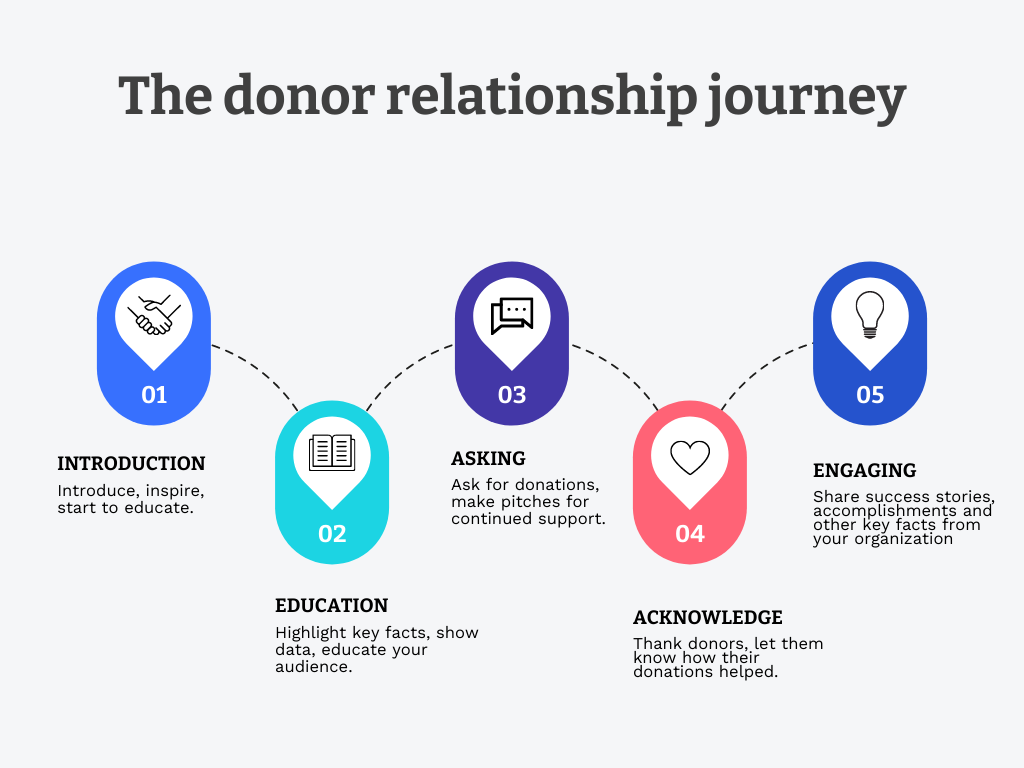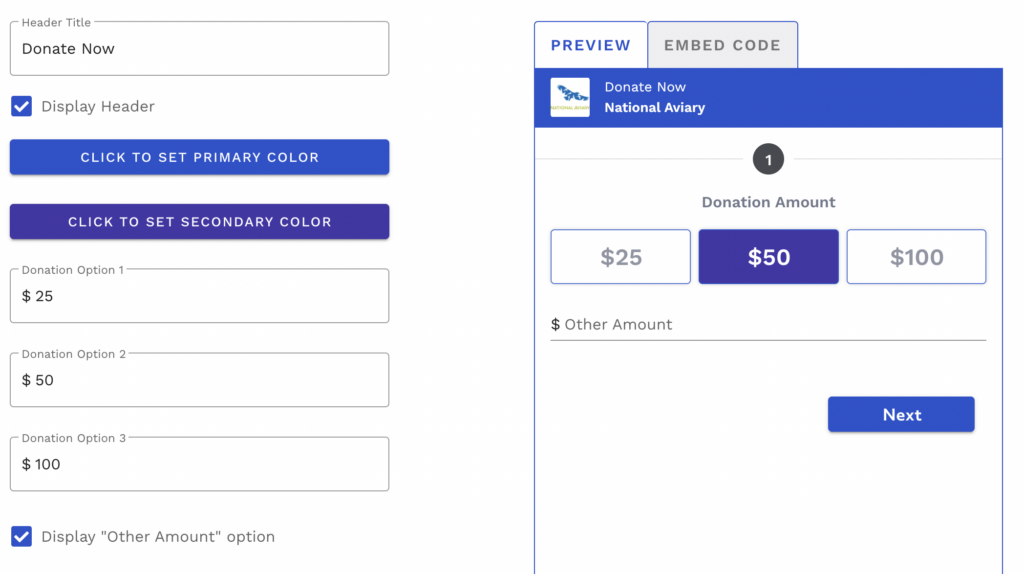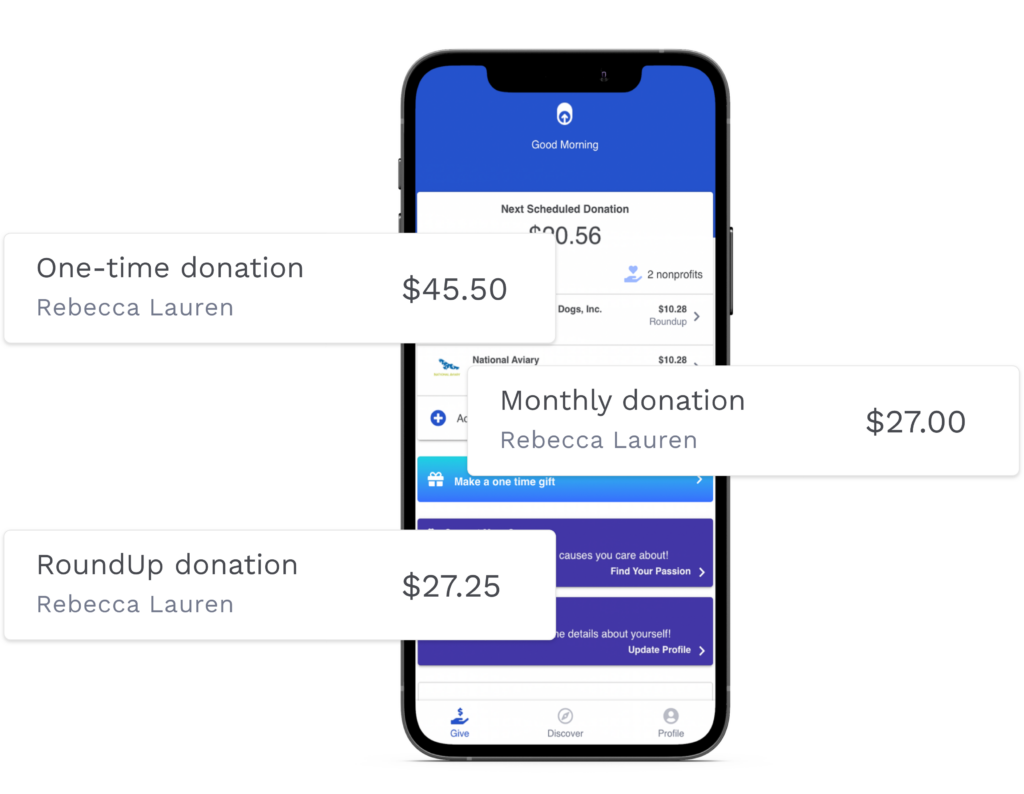The term donor relations encompasses the complete journey an average donor takes from first being introduced to a nonprofit to making a donation. It’s a critical part of any nonprofit’s success strategy and a big buzz word in the nonprofit sector.
Building positive donor relationships helps your nonprofit secure new donations and retain current donations. Here’s a breakdown of what donor relations mean for your nonprofit and how you can positively impact your relationships.
What’s included this guide
- Donor relations defined
- Why you should worry about your donor relations
- A typical donor relationship journey
- Strategies for healthy donor relations
- Putting it all together
What does the term donor relations mean?
“Donor relations” is all the effort your nonprofit puts in to maintain your donors’ trust, respect, engagement, and support. Nonprofits that have good donor relations give their donors a high-quality experience that fosters engagement and investment in the long term.
According to nonprofit experts, you can break donor relations into four distinctive parts:
-
Donor and donation management
-
Donor acknowledgment
-
Donor recognition
-
Donor reporting
Your relationship with your donors extends to both the physical and digital worlds. With the rise of online donating, your nonprofit needs to consider how the digital interactions your donors engage with might positively or negatively impact their donor experience.
Often you might hear the term stewardship used interchangeably with donor relations. However, stewardship traditionally focuses on how your nonprofit uses the donations your donors provide you. Your donor relationship considers the entire donor journey, not just the donations. In general, you can think of stewardship as one part of the overall positive donor relations you’re trying to foster.
Why you should worry about your donor relations
The short answer: it increases donor retention, engagement, and commitment. The longer answer is that thinking about each individual donor’s relationship with your organization helps you build a better long-term fundraising strategy.
Considering how all of your actions impact your donors’ relationship with your nonprofit is just good business. It helps you remove friction from the donation process and gives you perspective on what online tools and platforms your nonprofit needs to successfully engage donors.
Another not-so-hidden benefit: happier donors are likely to give more, recommend your nonprofit to a friend, and volunteer to help your cause!
A donor relationship journey
To understand a typical donor relationship journey it’s best to put yourself in a donor’s shoes and track their experience from start to finish.
First, think of all the times your donor interacts with your nonprofit, both physically and digitally. Ask yourself at each step if the interactions your donors take positively or negatively impact them.

1. Introducing your nonprofit
The first step in any donor’s journey is getting introduced to your nonprofit. There are a lot of ways this can happen and many nonprofits focus first on their physical presence at events like open houses, fundraisers, or volunteer sessions. However, your nonprofit’s introduction also extends online and encompasses things like Google search results for your nonprofit, your nonprofit’s website design and layout, and your social media presence.
Many nonprofits miss out on the benefits a great introduction has to their donor relations and focus more on raising funds rather than building relationships.
While fundraising is an essential part of your nonprofit’s success, your introduction is the first and best chance you have to inspire your donor and improve your donor relations. Your physical and online introductions should ensure that every donor that meets you know what your nonprofit stands for, how you accomplish your mission, and why you need their donations.
2. Explaining why donors should donate to your nonprofit
After you’ve introduced yourself, you need to explain to potential donors why they should donate to your nonprofit. During this stage of the donor journey, your nonprofit wants to create a compelling case for why donors should trust you.
Spend time explaining to donors how your nonprofit changes lives and how their gifts and donations can make an impact. During this stage you might provide social media posts that highlight key stories from the work you’ve already done. You might dedicate space on your website or blog to share successes and accomplishments. Finally, you might operate transparently by releasing annual reports on where money is spent or how donations impact your cause.
3. Asking donors to make a donation
Asking donors to make a donation is the next step in the donor relations journey after introducing yourself and explaining your nonprofit.
This is a critical part of your nonprofit’s success and a critical part of your donor’s journey. Since your potential donors have had a chance to get to know your organization, this stage of the journey should be focused on making it as easy as possible for them to donate.
You’ll want to make it as effortless as possible for your potential donors to support your cause. You should invest in a platform like RoundUp App or Ribbon that offers multiple ways to donate (one-time, monthly, and through RoundUp donations), provides you with easy-to-use donation forms for your website, and gives your donors a mobile platform to easily manage their donations.
You also want to consider additional ways your online donation process might negatively impact your donor relations. Having confusing site layouts and non-mobile-friendly forms makes it harder for donors to give.
4. Acknowledging donors’ donations
After donors have made their donations, it’s critical that your nonprofit acknowledge this donation. You might send out physical letters in the mail thanking users for their support or send out a personalized email acknowledging the gift you received.
In general, try for a two-day turnaround. At RoundUp App we send out personalized emails to donors who join our platform that day. We also acknowledge one-time gifts immediately with automatic donation receipts sent directly to your donors.
You might use a personalized email template to automatically send your donor a thank you and let them know how their donation is being used. Whatever strategy your nonprofit chooses, make sure you acknowledge donations to positively impact your donor relations.
5. Engaging your donors in the long-term
Once your donor has given a donation, their donor relations journey doesn’t automatically end. Instead, you’ll want to switch your focus to continual engagement with your donors.
In this stage, focus on providing updates, telling your organization’s story, and highlighting the successes each donor allows you to achieve. Use tools like RoundUp App’s donor dashboard to track your donors and see who is actively giving and who has dropped off from donating.
Make sure to address both audiences equally. You don’t want to negatively impact your donor relations by solely communicating with your donors when you need donations. Instead, donors want to feel inspired and like they’re part of your nonprofit’s team!
Improve donor relations with RoundUp App
RoundUp App helps improve donor relationships through tools that streamline the donation process.
Strategies for healthy donor relations
Building positive donor relations requires a lot of work both physically and digitally. Try these strategies to improve your donor relationships and experiences online:
- Remove friction in the donation process
- Make it easy for donors to manage their donations
- Build a culture of giving by integrating donating into their daily life
- Acknowledge and engage donors continually
Remove friction in the donation process
A great way to improve donor relations is to remove friction in the donation process. To remove friction in the donation process you need to ensure that your website is easy to navigate, that your donation forms are easy to use, and that all of your tools and platforms are mobile-friendly.
First, think about how your website layout might be causing friction. Is it easy for donors to find ways to donate immediately, or do donors have to poke around before finding your donate button? Consider adding donate buttons into your navigation menu, or providing compelling donation calls to action on your home page.
Next, ask yourself if your donation forms are easy to use? Do potential donors have to navigate to new pages or use outdated forms to make donations.

At RoundUp App we make it easy for donors to give directly from your website with custom donation embed forms.
Finally, with the rise of mobile-giving make sure that all of your tools and platforms are mobile-friendly. At RoundUp App we take a mobile-first approach to donating. We make it super easy for donors to find your nonprofit on our platform, set up a new donation, and start giving immediately to your nonprofit using mobile-ready features and tools.
Make it easy for donors to manage their donations

When donors RoundUp their everyday purchases they report feeling more engaged and inspired by the nonprofits they support. It’s one of the reasons we love the RoundUp method of donating so much!
Whenever possible, integrate giving into the daily lives of your donors. By making donating a daily habit and not a monthly expense, you’re building an audience that feels directly connected to the causes they support. This improves donor relations overall and makes donors feel like their part of your team!
Acknowledge and engage donors continually
After a donor has made a donation, continue communicating with them! Send thank you emails or notes, create blog posts that highlight the impact of their donations, or continue to engage them with your nonprofits’ story through social media!
Use marketing templates, like those found in RoundUp App, to build out yearly content calendars that share your nonprofit’s mission and highlight your successes.
You might also use reporting tools found in your RoundUp App dashboard to track donors who are and are not giving and send targeted individual messaging to these audience types.
Putting it all together
Ultimately the key to maintaining positive donor relations is taking a holistic approach to your donors’ journey. By removing friction whenever possible, sharing your mission, goals, and successes, and engaging your audience at every step of their journey, you’ll be on your way to building positive donor relations!
For more strategies about fundraising, engaging your audience, or building positive donor relationships visit our RoundUp App blog!





